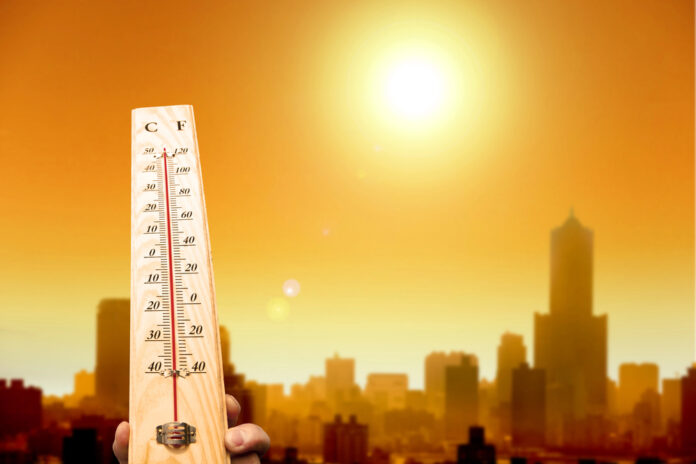If the high crime and homelessness crisis wasn’t already enough to put you off visiting San Francisco, the weather might do it. The city is facing a “second summer” with an extreme and uncomfortable heat wave sweeping through this October.
The West Coast city is experiencing an unusually intense heat wave, with temperatures hitting 94 degrees on Tuesday, a rare occurrence for the coastal city known for its fog and cool climate. This event has triggered an excessive heat warning from local authorities, who are urging residents to seek relief at cooling centers, public pools, or even take advantage of free ferry rides. The heat wave, which has pushed inland temperatures above 100 degrees in some areas, is expected to last through the weekend.
This weather pattern, referred to locally as “second summer,” typically brings warmer temperatures to San Francisco in early fall, but meteorologists are noting that this year’s heat is exceptionally extreme. Dylan Flynn, a meteorologist at the National Weather Service, pointed out that it’s very uncommon for the city to see temperatures in the 90s, especially in October. The last time San Francisco hit 94 degrees in October was back in 2012.
Inland areas have seen even higher temperatures, with Santa Rosa reaching 102 degrees, San Rafael hitting 105, and San Jose recording 100 degrees, all breaking previous records for October 1 set during a 1980 heat wave. The cause of the heat wave is offshore winds, which are blowing from inland areas out to the coast, bringing dry air and raising temperatures. Typically, the Pacific Ocean’s marine layer keeps San Francisco cooler than nearby inland cities like Sacramento.
That’s just way too hot.
The current dry heat is also raising concerns about wildfire risks across the state. California has already seen wildfires burn over 1 million acres this year, and officials warn that the dry conditions make the landscape highly susceptible to new fires. Pacific Gas & Electric (PG&E) has issued warnings about potential power shutoffs to reduce the risk of utility equipment sparking wildfires. While most planned outages around the Bay Area were canceled, power was cut to some customers in Northern California counties like Shasta and Butte.
Heat waves in the Bay Area can be particularly dangerous because many homes are not equipped with air conditioning, especially in coastal cities. Officials are advising residents to check on vulnerable neighbors, including the elderly and disabled. Nighttime temperatures have also remained high in areas like the Santa Cruz mountains, where temperatures stayed in the mid-80s overnight, making it difficult for people to cool down and increasing the risk of heat-related illnesses.
Outdoor workers and homeless individuals are especially at risk during the heat wave. In response, San Francisco has initiated special protocols, including wellness checks, bottled water distribution, and transportation vouchers for those in need. Temporary shelters have also been opened to provide relief.
As the heat wave continues, residents are urged to take precautions to protect themselves and their communities from the potentially deadly effects of prolonged high temperatures and the heightened risk of wildfires.

